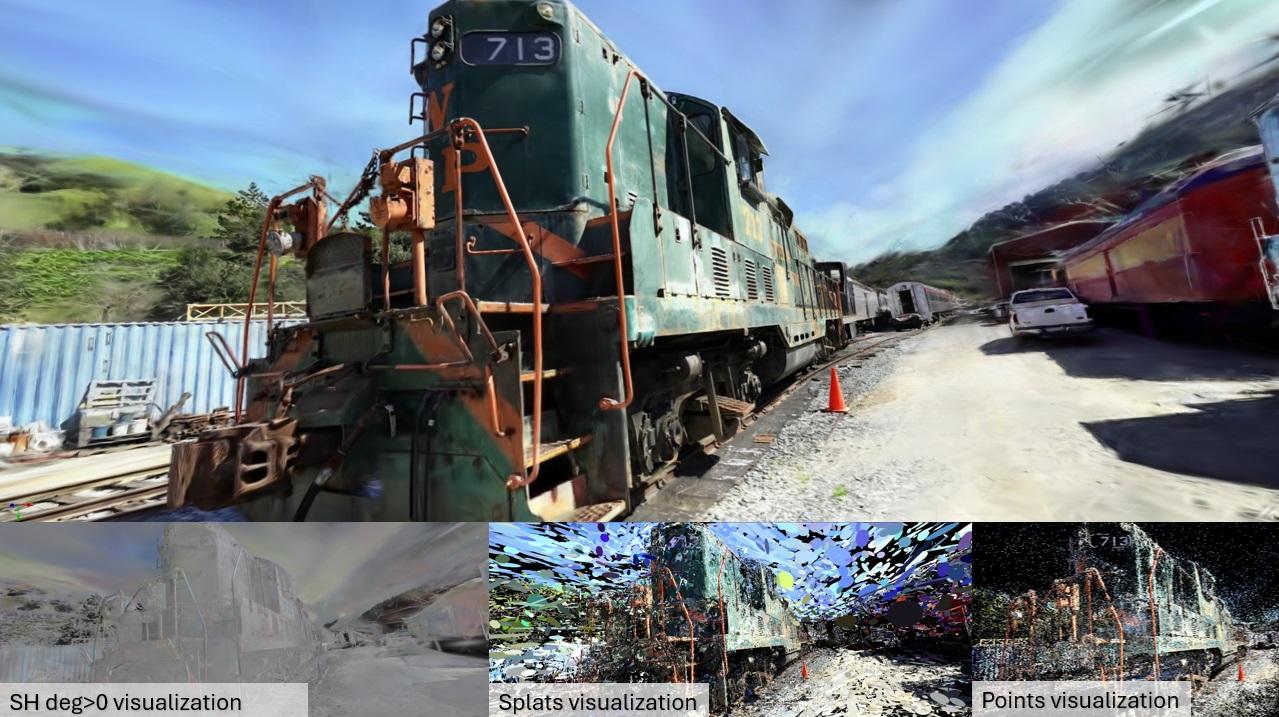Inland flooding causes significant economic and societal impacts annually. Of the eight natural disasters costing the insurance industry over $1 billion in 2024, six of these were categorized as flood events, with three of these occurring in Europe alone. Catastrophe modeling aims to quantify the risk of flood events to enable preparedness for the financial and insurance industries.
Given the short historical record of past flood events being less than 50 years in many cases, catastrophe models simulate long records of stochastic events to explore the uncertainty of low likelihood high impact events. Traditional methods typically use statistical extrapolation to form these new events. These methods are limited in their ability to form new and unseen events due to their reliance on the historical record.
JBA Risk Management is a global leader in flood risk management. Using the NVIDIA Earth-2 platform, developers at JBA have built a huge ensemble (HENS) pipeline to generate hypothetical weather data of winter seasons for the basin of the river Elbe. The combination of AI models, the Earth-2 software stack, and NVIDIA GPUs delivers performance multiple orders of magnitude faster than traditional numerical weather models.
This unprecedented speed enables the generation of new, diverse, physically plausible weather scenarios in previously unachievable amounts. Integrated with hydrological models, this AI-driven solution provides a robust framework for estimating present-day flood risk, enabling better preparedness and resilience planning.
The growing impact of flood events
Flooding remains one of the most devastating natural hazards, causing immense human, economic, and environmental losses across the globe. Recent years have underscored the urgency of understanding and preparing for extreme flood events. 2024 was described as “the year of the flood” by PERILS, an independent organization that aims to enhance the insurance industry’s understanding of risk. Severe flooding across Southern Germany in May 2024 caused $1.58 billion in losses, while unprecedented rainfall triggered widespread inundations in Spain later in the year and caused $3.9 billion in damages.
Floods are often driven by a complex interplay of factors: precipitation intensity, duration, and frequency are key drivers, but so are surface temperature and ground and soil conditions, which influence evaporation and the ability of the land to absorb water. Understanding the relationship between weather dynamics and flood impact is key to estimating the risk posed by flood events.
Of particular interest to the insurance and financial industries are the rarest and most devastating floods, such as those colloquially referred to as “a 1-in-200-year flood.” These are events of such magnitude that the probability of a flood event of equal or greater magnitude in any particular year is 0.5%. However, robust statistical analysis of these events requires weather data spanning several hundred years, far exceeding the high-quality observational records currently available, which often cover fewer than 50 years.
Traditional statistical methods attempt to address the limited historical record by using synthetic time series, created by extrapolating and perturbing existing data. For details, see Estimation of the Conditional Distribution of a Multivariate Variable Given That One of Its Components Is Large. While these provide a robust quantification of flood risk, they have limitations around their ability to create plausible events unlike any in the historic record. Numerical weather prediction (NWP) models do have the ability to create new and unseen events. However, their computational expense makes producing thousands of years’ worth of weather data unfeasible in practice.
AI offers a transformative alternative. Leveraging the NVIDIA Earth-2 platform and tools, developers can build AI weather models to generate large ensembles of realistic weather scenarios with multiple orders of magnitude less computational resources, providing insight into what could have happened under different conditions. By enabling the rapid production of physically plausible, spatially coherent, and statistically robust data, this approach represents a significant leap forward in flood risk estimation and management.
Generating massive ensembles using NVIDIA Earth-2
Earth-2 platform offers Earth2Studio Python library packages and pretrained models to support the exploration and development of AI inference pipelines. Developers at JBA working with Earth2Studio developed their simulation pipeline using FCN SFNO-based huge ensemble pipeline and a precipitation diagnostic model for hindcasting (Figure 1). For more about huge ensembles, see Huge Ensembles Part I: Design of Ensemble Weather Forecasts using Spherical Fourier Neural Operators.
The precipitation diagnostic is specific to this study with JBA, but other diagnostic models available in Earth-2 platform can be added to such inference pipelines to forecast derived variables of interest. To see an example for deriving solar radiation, see Advancing Solar Irradiance Prediction with NVIDIA Earth-2.

Setting up the HENS pipeline in Earth-2 Studio Enterprise
This section details the configuration and execution of multi-checkpoint ensemble forecasts, integration of precipitation diagnostics, and efficient output analysis. While developed for this project, the workflow can be readily adapted to other applications.
Step 1: Prepare the environment
- Access Earth2Studio: Ensure you have access to NVIDIA Earth-2 AI packages, specifically Earth2Studio and Earth2Studio Enterprise for configuring and running AI-driven weather simulations.
- Obtain SFNO checkpoints: Download the HENS-SFNO pretrained model packages. Model packages include pretrained checkpoints, normalization metrics, information about the assignment of variables to channels, and more.
- Obtain HENS-SFNO skill file: A file containing deterministic skill of the model, which is required for scaling the noise during perturbation.
Step 2: Fetch initial conditions and validation data
- Automated fetching: Use Earth2Studio sample pipelines to fetch, preprocess, and cache initial conditions (ICs) from atmospheric data stores such as ECMWF Reanalysis (ERA5) hosted by Copernicus (CDS) or NOAA Global Forecast Service (GFS).
- Store data for fast access: Use the Earth2Studio data store function to save ICs and validation data in a performant file format (NetCDF or Zarr, for example) to ensure quick access during inference and validation.
Step 3: Configure the HENS pipeline through a configuration file
- Set up multi-checkpoint ensemble inference
- Define your pipeline setup using a configuration file starting from the config file in the example provided in Earth2Studio Enterprise.
- Assign a unique project name to avoid overwriting results from previous runs.
project: 'hens_winter_season' |
- Define start times, lead time, and ensemble size
- Provide a list of start times or define a block of start times as provided in the code sample below.
- Specify the number of autoregressive steps for the forecast rollout. For example, 40 steps for a 10 days rollout with a model operating on a 6-hour time step.
- Define the ensemble size per checkpoint (50 members, for example).
- For each checkpoint, generate ensembles of size
at each IC.
- Total number of runs:
- Optimize performance by setting an appropriate inference batch size.
ic_block_start: "2023-11-09"ic_block_end: "2023-11-16"ic_block_step: 24nsteps: 678 # number of 6h forecasting stepsnensemble: 18 # ensemble size per checkpointbatch_size: 2 # inference batch size |
- Forecast model?
- Select the SFNO model architecture, which is compatible with the Berkeley model packages and checkpoints.?
- Provide the path to the directory containing model packages with pretrained checkpoints.?
- If no custom model is specified, Earth2Studio will automatically download and use a default checkpoint for the selected forecast model.?
forecast_model: architecture: earth2studio.models.px.SFNO # forecast model class package: '/path/to/HENS/model/packages' # folder containing packages max_num_checkpoints: 8 # number of checkpoints |
- Diagnostic model
- Select model to derive precipitation from raw weather forecast model output.?
- Option to include a custom diagnostic model. For details, see the section above on training custom precipitation diagnostics.?
- Option to define multiple diagnostic models to calculate additional variables of interest.
diagnostic_models: precipitation: architecture: earth2studio.models.dx.PrecipitationAFNO # model package: '/path/to/package' # package |
- Initial condition source and perturbation?
- Select a local data source and point it to the data downloaded in Step 2.??
- Adjust the perturbation settings to recover the calibrated ensemble, according to Huge Ensembles Part I: Design of Ensemble Weather Forecasts Using Spherical Fourier Neural Operators
data_source: _target_: earth2studio.data.DataArrayDirectory dir_path: '/path/to/IC/data/dir' # data which was downloaded in step 2perturbation: method: 'hcbv' # HENS perturbation method integration_steps: 3 # integration steps in vector breeding noise_amplification: .35 # amplification of noise skill_path: '/path/to/skill/file.nc' # downloaded in step 1 perturbed_var: 'z500' # variabile to perturb in seeding step |
- Configure output settings?
- Specify which variables shall be stored to disk (temperature and precipitation, for example).??
- Optionally, limit output to a specific geographic area to manage data size.?
- Be mindful of storage constraints as ensembles with hundreds or thousands of members can easily generate massive datasets. Additionally, writing large amounts of data to disk can impact inference speed.?
- Select the desired file format for output (NetCDF or Zarr, for example).
file_output: path: './outputs' # directory to which files are written output_vars: ['t2m', 'u10m', 'v10m', 'tp06', 'z500', 'msl'] format: _target_: earth2studio.io.NetCDF4Backend |
Step 4: Execute HENS pipeline
- Run through Python
hens.py --config-name=precip_hens_winter2324.yaml? - Run the Python script through MPI or Slurm to distribute computation efficiently.?
- The pipeline will automatically allocate checkpoint IC pairs across processes.?
Step 5: Analyze outputs
- Validation?
- Compare the output with validation datasets to assess pipeline performance and reliability.?
- Earth2Studio contains, for example, methods for ensemble-based scoring.?
- Analyze AI-generated weather data?
This detailed guide will help you configure and run the HENS pipeline effectively, enabling the creation of extensive ensembles of weather events and their integration with precipitation diagnostics.
Training custom precipitation diagnostics
Most AI-driven weather models focus on producing variables like temperature, pressure, and wind, often excluding precipitation from their set of output variables. However, precipitation can still be derived from forecast model outputs by passing them through a diagnostic AI model, as shown in Figure 2.
This approach ensures that rainfall patterns remain physically consistent with other weather variables without having to retrain a forecast model. A diagnostic model can be small and hence cheaper to train than a skilful forecast model. The set of input variables to the diagnostic model can be chosen such that the diagnostic model can be put on top not only one, but a range of forecast models.
Earth-2 platform offers developers a set of diagnostic models and developers can further train a customized diagnostic model by using NVIDIA PhysicsNeMo. To see an example, visit NVIDIA/physicsnemo on GitHub.

AI-driven counterfactual analysis by JBA Risk Management
In this study led by JBA Risk Management, the team aims to assess the risk profile of flooding in the Elbe that occurred during the winter of 2023-2024 by leveraging the HENS pipeline with precipitation diagnostics. JBA generated a comprehensive 1,008-member ensemble hindcast of boreal winter 2023-2024 scenarios, with predictions extending up to 112 days. Producing the total amount of 300 years of atmospheric data through AI consumed 110 GPU hours on NVIDIA L40s GPUs, which were accessed in the cloud.
The computational footprint is multiple orders of magnitude smaller than what NWP would require for generating an equivalent amount of data. The ensemble is initialized using lagged ICs spanning the period from 9-16 November 2023, with each IC inducing additional ensembles generated using multiple HENS-SFNO checkpoints. Initial conditions are perturbed to capture a range of plausible scenarios, and simulations are rolled out until 29 February 2024. Figure 3 presents data from a single simulation among the 1008 ensemble members, revealing a significant precipitation event that spans the majority of the Elbe catchment in late January.

The resulting AI-generated weather data is processed through a downstream hydrological pipeline across the Elbe basin, Germany. It links atmospheric conditions with catchment and river responses, resulting in an extreme event dataset that represents a counterfactual analysis of flooding during the 2023-2024 winter season. This data provides a more plausible representation of the most extreme winter flooding seasons when compared to existing statistical extrapolation approaches, due to the seasonal simulations consisting of a broader range of events in terms of frequency, severity and structure.
The counterfactual event data is then used in combination with a catastrophe risk model and population density data to enhance understanding of flood likelihood and risk within the Elbe region at high resolution (Figure 4). Additionally, this data enables exploring the question of how impactful the actual 2023-2024 flooding was, compared to the range of potential outcomes. Although the actual season was severe, the analysis shows a significant set of more damaging scenarios that impact the Elbe population up to three times more. For more details, see AI Weather Forecasting: Can It Reveal Unseen Flood Risks?

Conclusion
Results of the downstream modeling pipeline, provided by JBA, will further enhance understanding of the distribution of flood risk, including tail risks, and its implications for catastrophe management. Generating diverse and realistic ensembles of boreal winter scenarios not only improves the understanding of flooding across the Elbe in 2023-2024, but also provides valuable metrics to quantify the uncertainty surrounding flood-induced impacts.
Notably, JBA’s counterfactual scenarios revealed scenarios with population impacts up to 3x higher than the observed impact of the 2023-2024 Elbe floods, as well as maximum river flow rates exceeding historical values by 50% in major cities.
These advancements highlight the opportunities that NVIDIA Earth-2 platform offers developers that build solutions for natural hazard catastrophe modelling, enabling the insurance and reinsurance industries to better assess risks, optimize preparedness strategies, and build resilience. Furthermore, using NVIDIA GPUs and the Earth-2 platform has been pivotal in significantly reducing the computational costs associated with generating these vast datasets, further enhancing the feasibility of large-scale, high-resolution simulations for climate change mitigation.?Get started with Earth2Studio.?
To learn more, watch the NVIDIA GTC 2025 session, Harnessing AI for Advanced Flood Risk Modelling and Mitigation Strategies with JBA.













